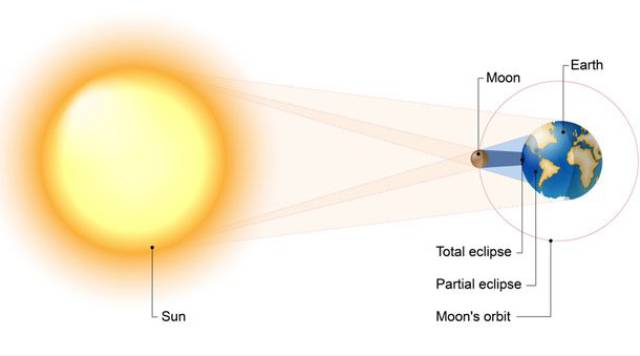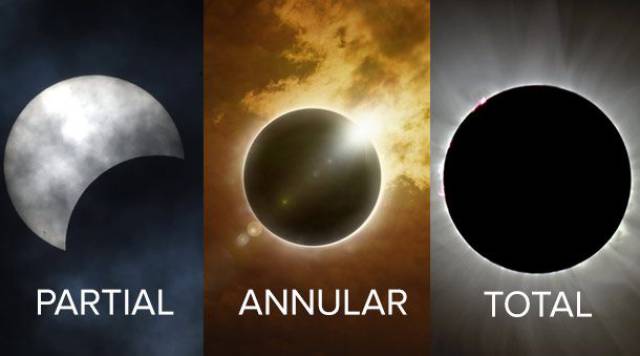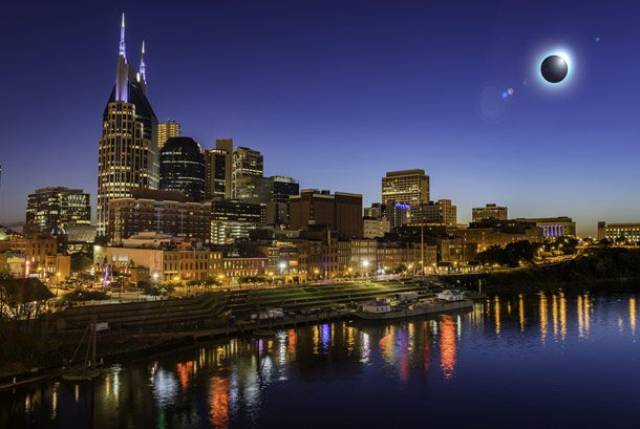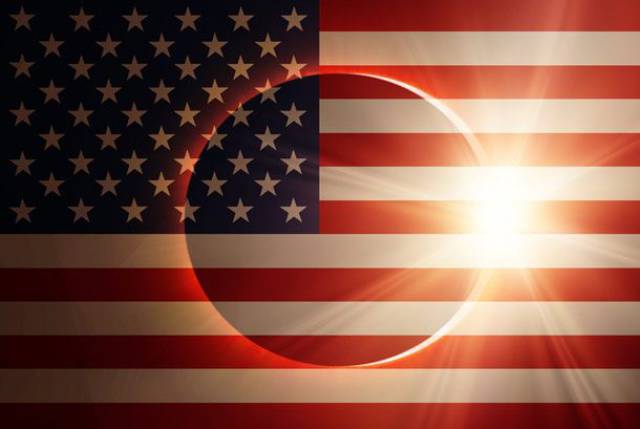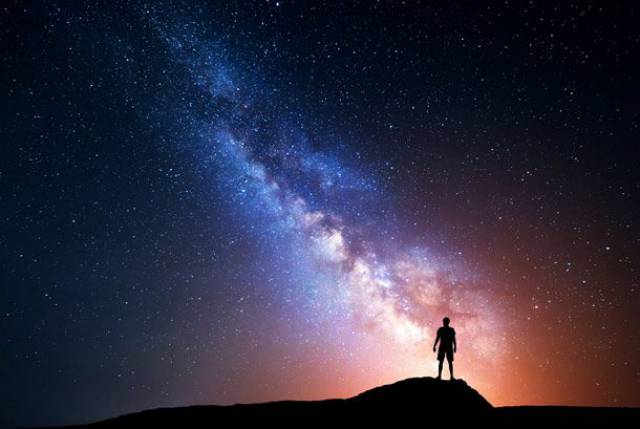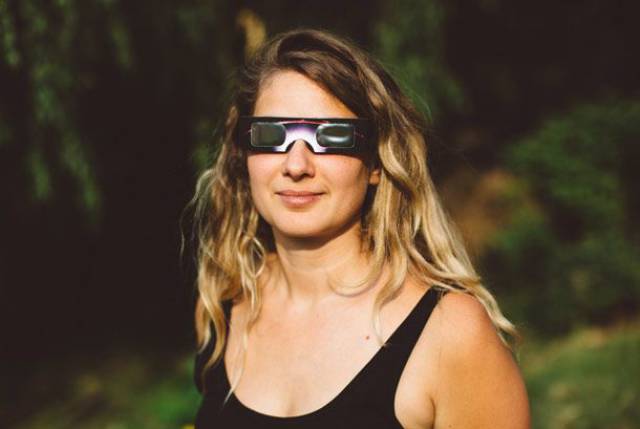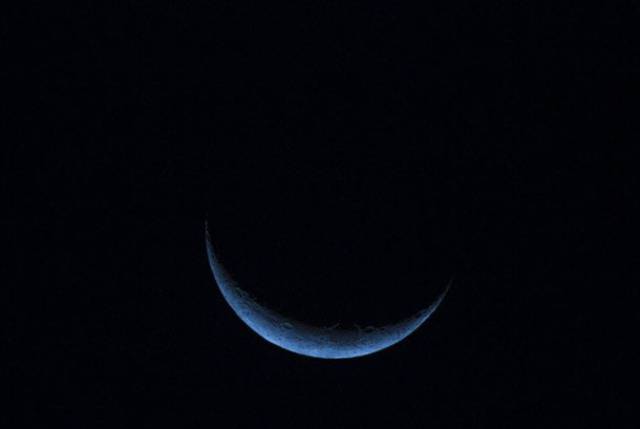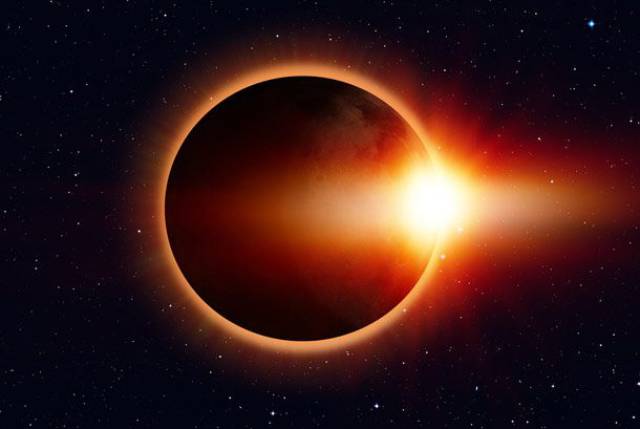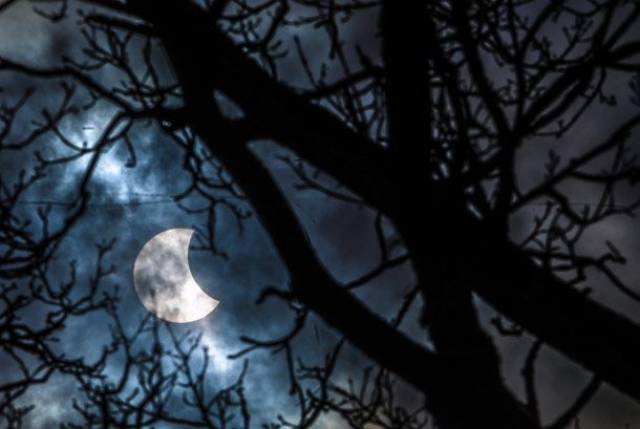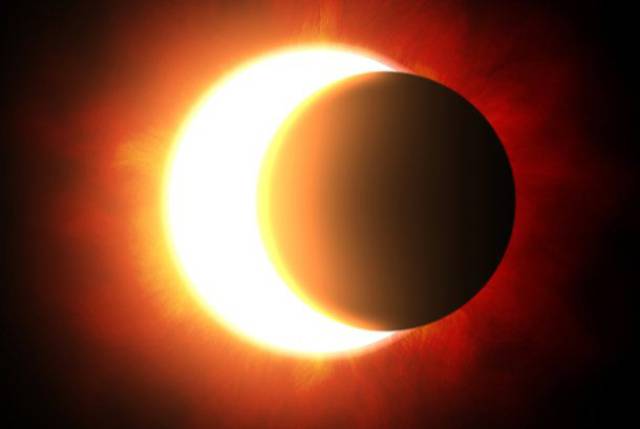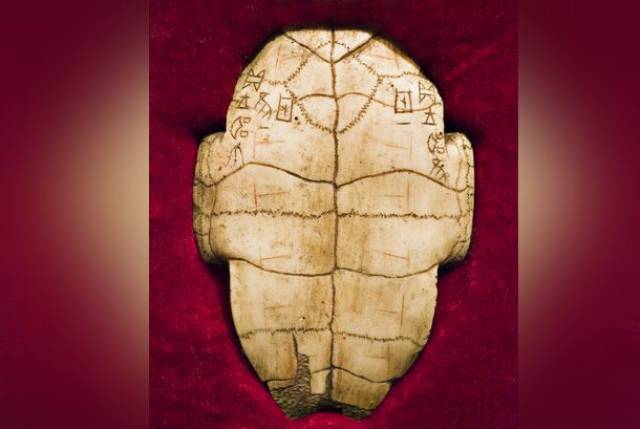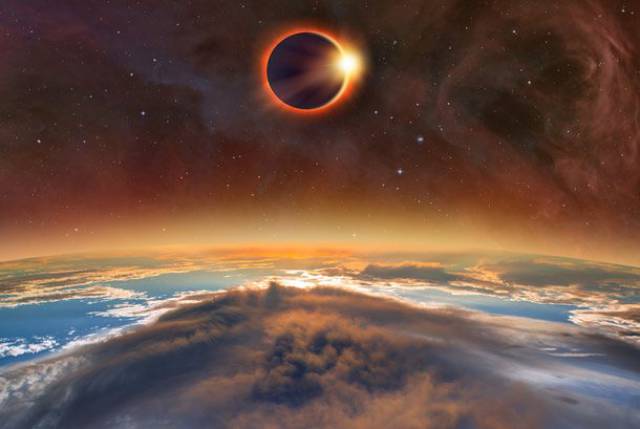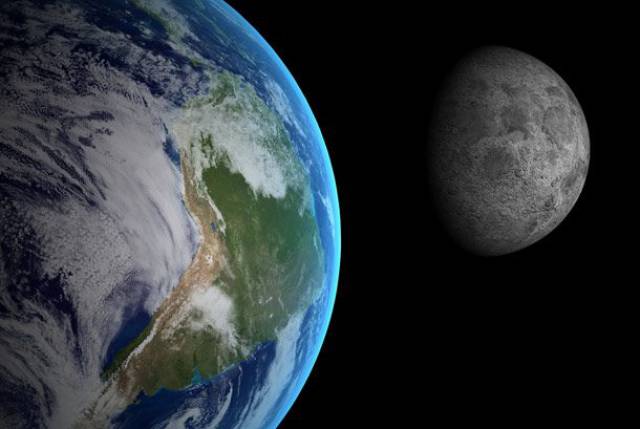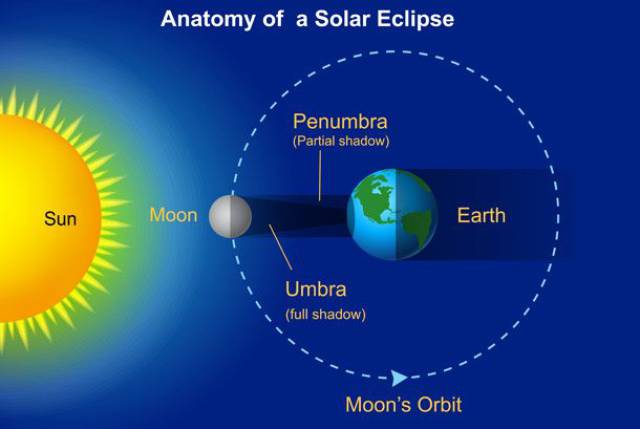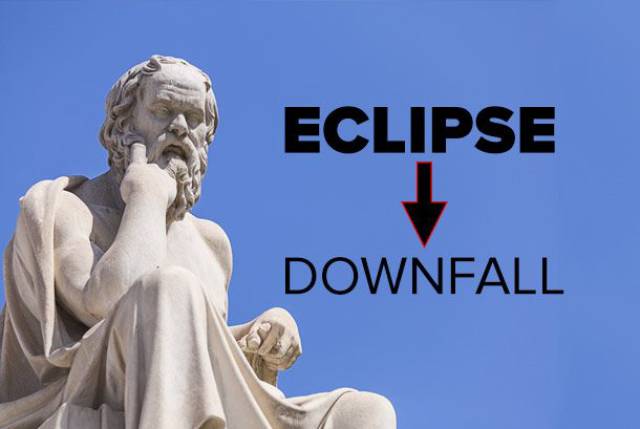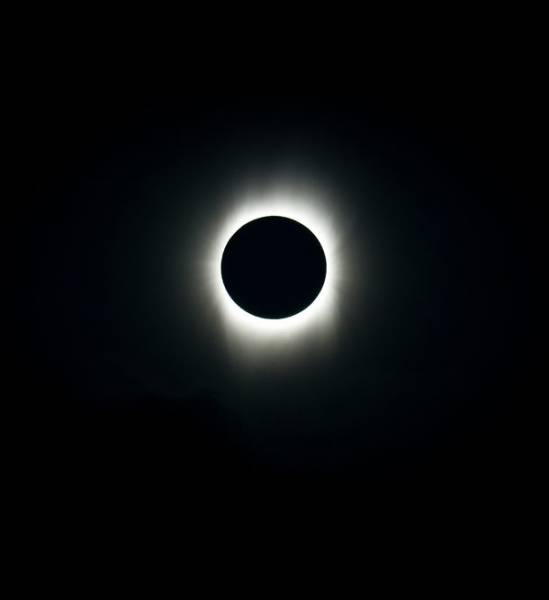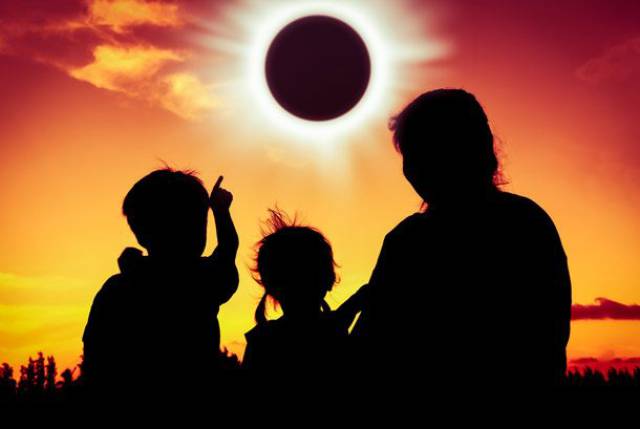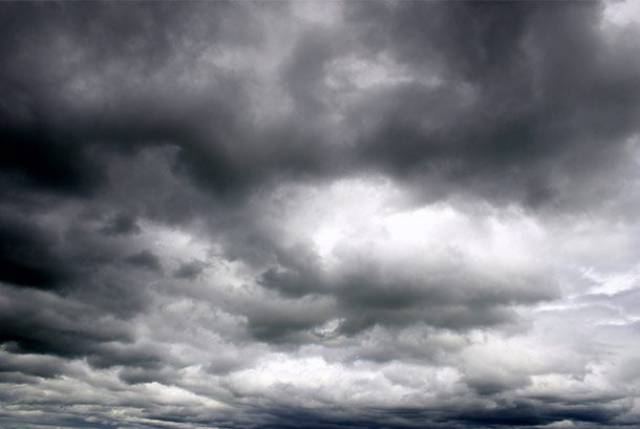A solar eclipse happens when the moon passes in front of the Sun and casts a shadow on the Earth.
This is because the distance between the Sun and the Earth is about 400 times the Moon’s distance from the Sun. The Sun’s diameter is also about 400 times larger than the Moon’s.
Due to these measurements, the Sun and the Moon have a similar size when viewed from Earth. When the moon passes in front of the sun, it blocks the light from reaching Earth.
There are three different types of solar eclipse: Partial, Annular, and Total.
A partial solar eclipse is when the Moon does not line up completely with the sun.
An annular solar eclipse is when the Moon and the Sun are in line, but either the moon is further from Earth or the Earth is closer to the Sun. In this situation, the apparent size of the Moon is smaller than that of the Sun, which then creates a bright ring surrounding the darkness of the Moon.
A total eclipse is when the moon completely covers the sun.
The solar eclipse on August 21, 2017 will be the first total eclipse in the continental U.S. in 38 years.
The last one took place in February 26, 1979; the next one won’t be until April 8, 2024.
The solar eclipse on August 21, 2017 has been nicknamed “The Great American Eclipse.”
This is because it’s the first time since the total solar eclipse on January 11, 1880 that a total eclipse will occur exclusively over the continental U.S.
Note: The eclipse of February 26, 1979 was not exclusive to the U.S. and was also viewed from Canada and Greenland.
Stars will appear.
As the eclipse darkens the skies, the planets and stars hidden by the Sun’s light will be visible. Keep a lookout for Mars, Mercury, Jupiter, and Venus.
Do not look at the eclipse without eye protection.
Looking at the sun directly without any eye protection is very dangerous and can even cause blindness.
A solar eclipse only happens during a New Moon.
This is because the Moon has to be between the Sun and the Earth for the eclipse to happen. The only lunar phase when that happens is New Moon.
Though eclipses happen during New Moons, they don’t happen at every New Moon.
This is because the Moon’s orbit tilts at 5 degrees to Earth’s orbit around the Sun. Eclipses only happen when the Earth, Sun, and Moon’s path intersect (this intersection is called a “node”). Usually, the Sun lies either above or below the nodes and no eclipse happens.
Eclipse totalities vary in lengths.
This is because the Earth is not always at the same distance from the Sun, and the Moon is not always the same distance from the Earth.
For the eclipse happening on August 21st, 2017, the first contact will be in Oregon.
People in Government Point, Oregon will first experience totality at 10:15:56.5 a.m. PDT. The total phase will last 1 minute and 58.5 seconds.
For the eclipse on August 21, 2017, maximum totality is 2 minutes and 40.2 seconds.
If you want to experience the eclipse for this total length of time, you should go to south of Carbondale, Illinois, in Giant City State Park.
Strange things will happen during the eclipse.
As totality nears, you might experience strange things. To name a few, all around the horizon, you’ll see areas lighter than the sky around the sun, shadows that look different, birds will stop chirping, and a temperature drop of about 10 degrees to 15 degrees F.
Though the eclipse on August 21, 2017 has a maximum totality of 2 minutes and 40.2 seconds, the maximum totality for an eclipse can be much longer.
Seven minutes and 32 seconds to be exact. The next solar eclipse coming close to maximum totality won’t occur until June 13, 2132 and will last for 6 minutes and 55 seconds.
China produced the first known recordings of solar eclipses.
These recordings were inscribed in pieces of bone and shell called “oracle bones” from around 1050 B.C.
The width of totality’s path is about 160 km (99.42 miles) across, and its length can stretch across the Earth for about 16,093.44 km (10,000 miles).
If you are at the North or South Poles, you cannot view a total solar eclipse.
In ancient times, people thought an eclipse was an omen of something bad about to happen or that the gods were angry.
In about a million years, solar eclipses won’t be noticeable.
This is because the Moon is slowly drifting away from the Earth.
The shadow of an eclipse is broken into three parts: the umbra, penumbra, and antumbra.
The umbra is the darkest part of the shadow where the Moon completely covers the Sun. The antumbra is the area surrounding the umbra, where the Moon is in front of the Sun, but it isn’t covering the Sun entirely, so the shadow is not as dark. The penumbra is the outer area of the shadow where the Moon only covers part of the Sun.
The word “Eclipse” in Greek means abandonment or downfall.
The Sun’s white corona can only be observed from Earth during a total solar eclipse.
This is because it’s intensity is much lower than the brightness of the sky.
On average, a particular location on the Earth will have a total solar eclipse once every 410 years.
However, Brisbane, Australia had two eclipses within 12 months. One in April 5, 1856 and the other on March 25, 1857. The U.S. will have two eclipses 6 ½ years apart. The first is this coming August 21, 2017, and the second will be on April 8, 2024.
Total solar eclipses are safe to watch directly.
Only the part of the eclipse where the Sun is completely covered by the Moon is safe to watch directly.
The Moon’s shadow travels across the Earth’s surface at up to 5,000 miles per hour!
Canadian astronomer and renowned eclipse chaser J.W. Campbell traveled the world for 50 years in an attempt to see 12 different eclipses.
He ran into overcast skies every time.
Image Souces: 1-5. Shutterstock, 6. Shutterstock with words added, 7-23. Shutterstock, 24. Shutterstock edited with Annular, partial, and total eclipses and words added, 25. Shutterstock

